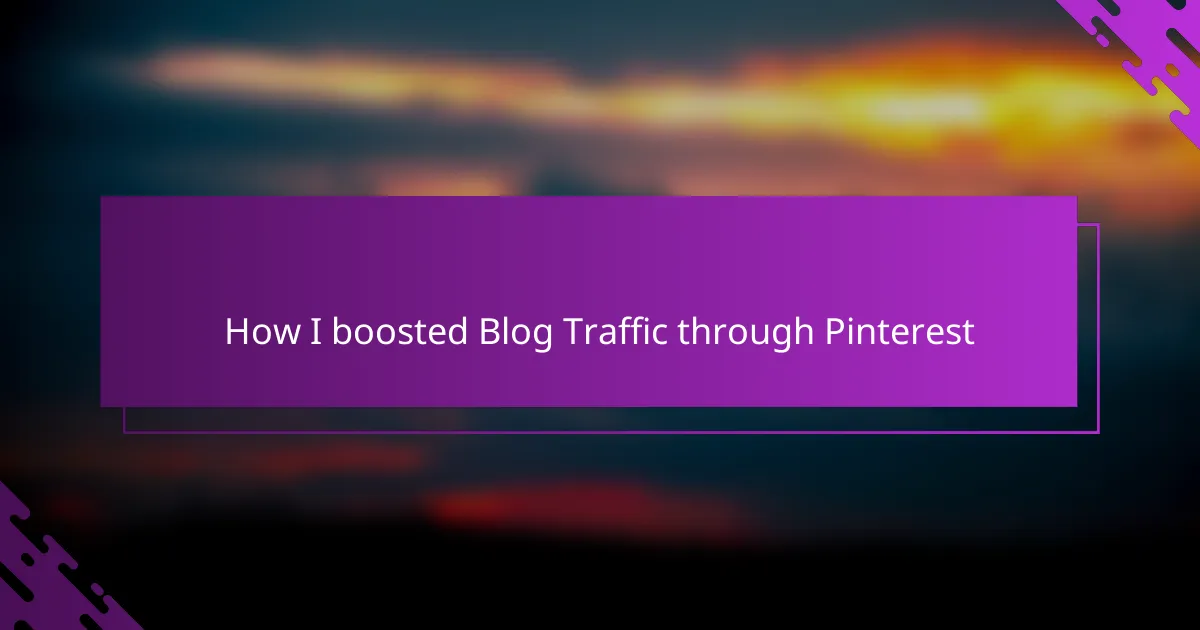Key takeaways
- Pinterest marketing is an effective long-term strategy for driving traffic to blogs through visually appealing pins that link back to the content.
- Creating engaging pins involves using bold text overlays, vibrant colors, and vertical formats to attract attention and improve visibility.
- Optimizing pins with specific keywords and thoughtful hashtag usage enhances discoverability and boosts engagement on the platform.
- Regularly analyzing Pinterest traffic data, including seasonal trends and audience behaviors, helps inform content strategies for sustained growth.
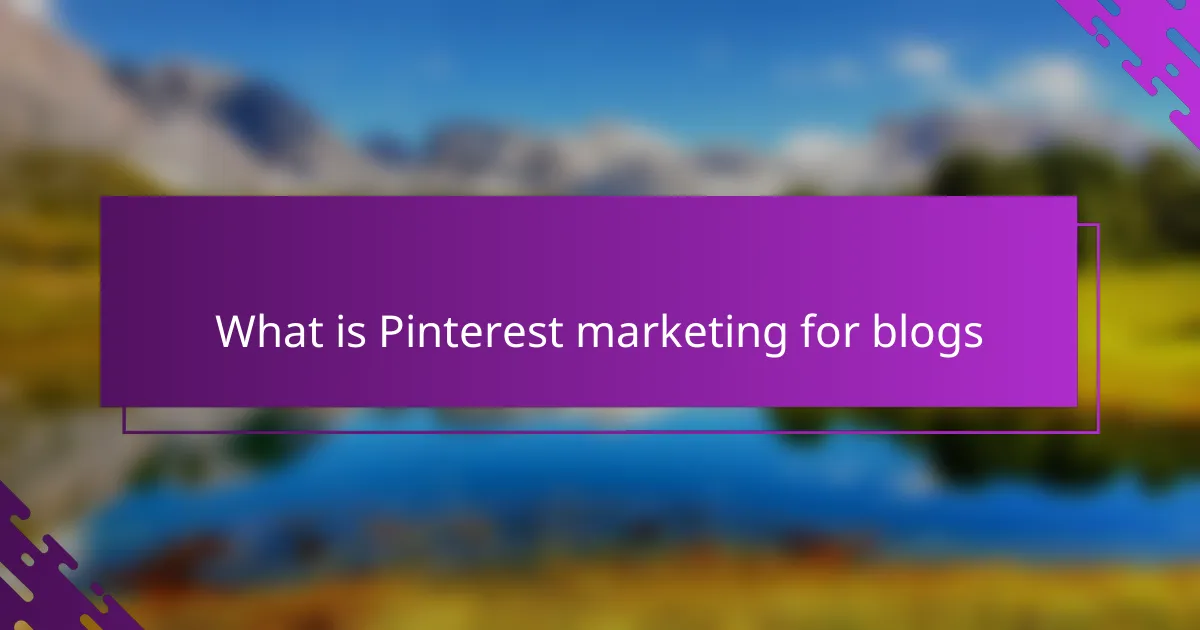
What is Pinterest marketing for blogs
Pinterest marketing for blogs is essentially using Pinterest as a tool to drive traffic to your blog posts. It involves creating and sharing visually appealing pins that link back to your blog, making it easier for users to discover your content. From my experience, it’s like planting seeds in a vast garden where each pin has the potential to grow into a steady stream of visitors.
Have you ever wondered how one image on a platform can bring hundreds or even thousands of visitors to a single post? That’s the magic of Pinterest marketing—it leverages the power of visuals and searchability. When I started using Pinterest strategically, I realized it wasn’t just about pretty pictures; it was about thoughtful planning and understanding what your audience is searching for.
What makes Pinterest marketing for blogs so unique is its longevity. Unlike social media posts that disappear quickly, pins continue to surface in searches and feeds long after you’ve posted them. This aspect hugely appealed to me because it meant my blog traffic could keep growing without constant effort, turning Pinterest into a long-term partner in my blogging journey.
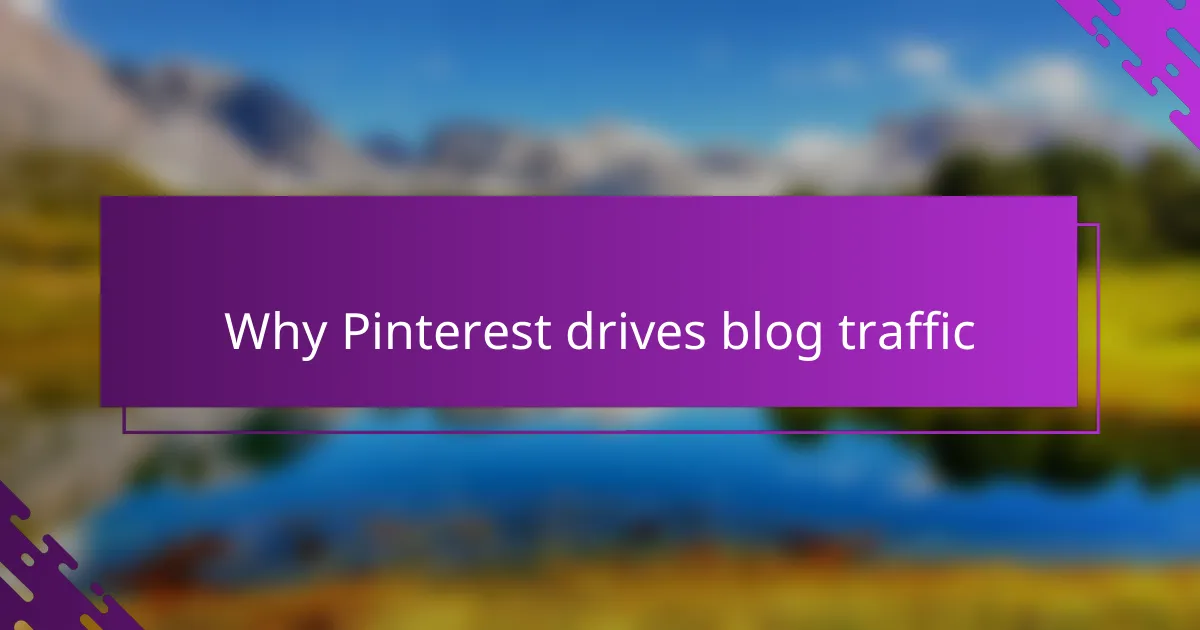
Why Pinterest drives blog traffic
Pinterest drives blog traffic because it acts like a visual search engine, making content easier to find for people actively looking for ideas or solutions. I noticed that when I optimized my pins with relevant keywords, my blog visits didn’t just trickle in—they steadily increased as more users discovered my posts through search.
Have you ever thought about why a beautiful image stops you in your scroll and makes you want to click? That’s exactly what happens on Pinterest. From my experience, the combination of stunning visuals and targeted keywords creates a powerful pull, drawing users directly to my blog from the platform.
What I truly appreciate about Pinterest is how pins have a much longer lifespan compared to other social networks. One pin I created months ago recently brought a surge of traffic—proof that with the right approach, Pinterest keeps working quietly behind the scenes to boost your blog’s visibility over time.
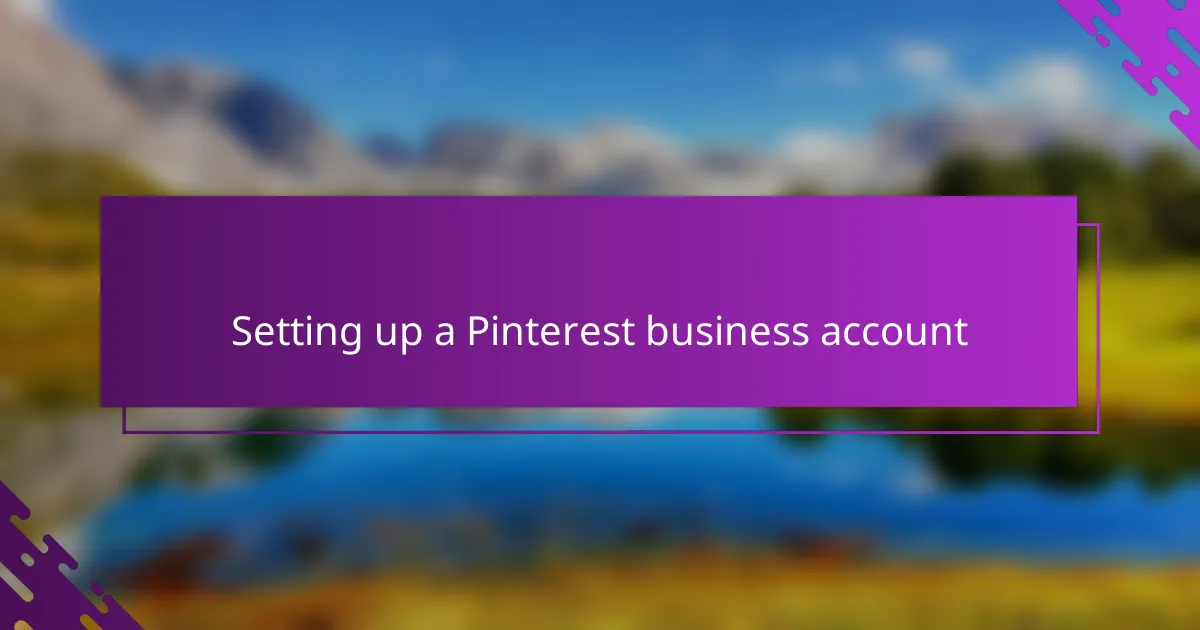
Setting up a Pinterest business account
Setting up a Pinterest business account was a game-changer for me. Unlike a personal account, the business profile gave me access to Pinterest Analytics and advertising tools, which suddenly made my marketing efforts feel more strategic and measurable. Have you ever felt like you were throwing pins into a void without knowing if they’re landing anywhere? That’s exactly how I felt before making the switch.
The process itself is straightforward—you just need to sign up using your email or convert your existing personal profile to a business one. But what really stood out to me was the ability to claim my blog’s website, which not only added credibility but also unlocked rich pins that automatically pull in extra information from my posts. This small step gave me a sense of ownership and professionalism I hadn’t realized I was missing.
What surprised me most was how Pinterest guided me through setting up my profile with keyword-rich descriptions and relevant categories. It felt like the platform was nudging me to think about who my audience was and how they might search for my content. This insight shifted my approach from simply pinning pretty images to thinking about Pinterest as a tool for discovery and connection.
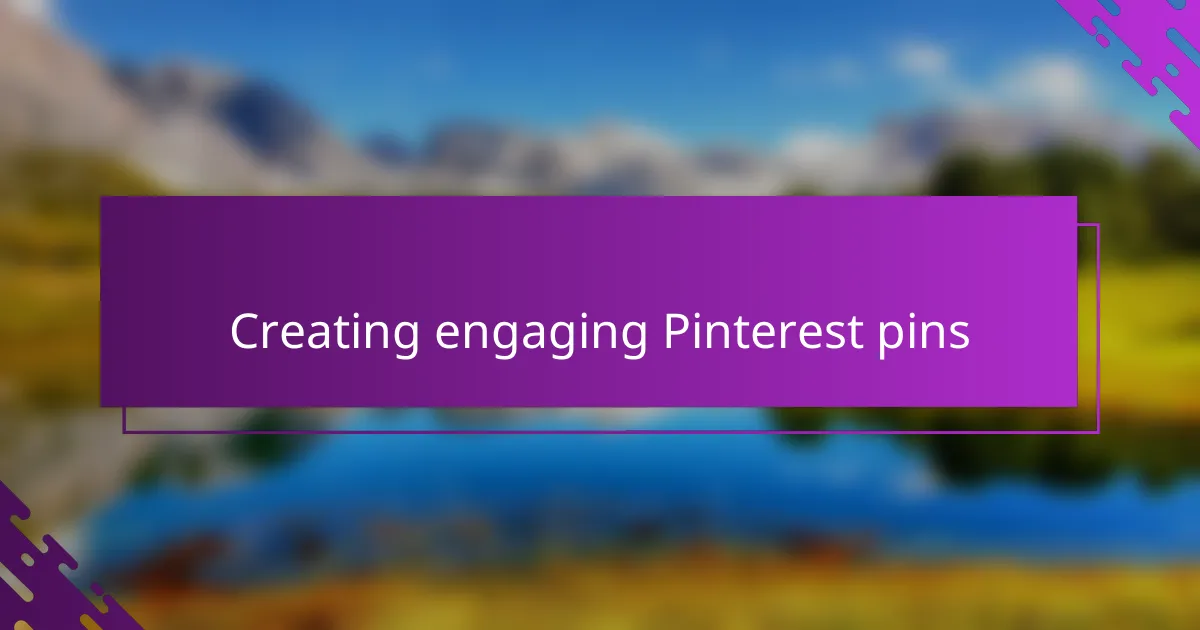
Creating engaging Pinterest pins
Creating engaging Pinterest pins isn’t just about picking a pretty picture—it’s about crafting a visual invitation that makes people stop scrolling. I found that using bold, clear text overlays on my images helped a lot because it immediately tells the viewer what the pin is about. It’s like giving them a signpost pointing straight to the value I’m offering.
Have you ever clicked on a pin simply because it looked interesting or helpful at a glance? That’s exactly what I aim for by choosing vibrant colors and clean layouts that match my blog’s style. From my experience, consistency in design not only builds trust but also makes your pins instantly recognizable, which keeps people coming back for more.
One tip I swear by is thinking about the size and format before creating a pin. Pinterest favors tall, vertical pins because they take up more space in feeds and stand out more. When I switched to this format, I noticed a clear jump in engagement—I guess it’s true what they say, size does matter on Pinterest!
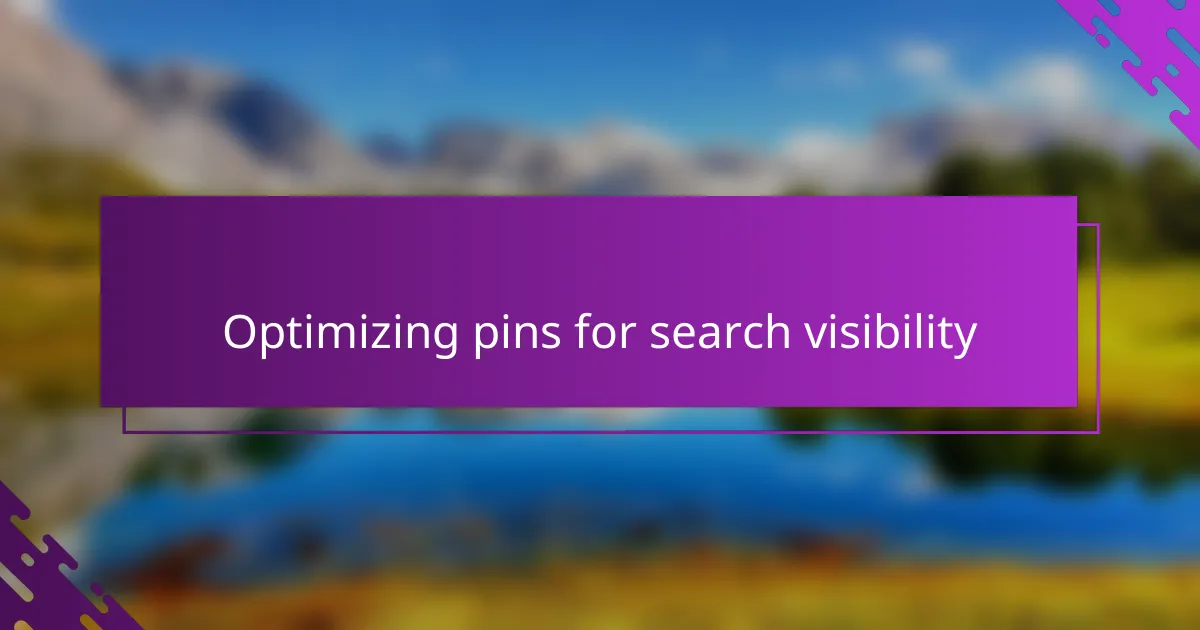
Optimizing pins for search visibility
Optimizing pins for search visibility felt like uncovering a secret code at first. I realized that simply uploading a pretty image wasn’t enough; adding relevant keywords to my pin titles and descriptions made all the difference. Have you ever tried searching for something on Pinterest only to find tons of unrelated pins? That’s where the right keywords help your pins stand out in a sea of content.
One thing that surprised me was how using specific, descriptive keywords rather than generic terms boosted my pin reach. For example, instead of just “recipe,” I learned to use “easy vegan breakfast recipe” which connected me with the exact audience interested in that content. It made me appreciate how Pinterest thinks more like Google than Instagram—search intent matters deeply here.
I also experimented with hashtags and found they can enhance discoverability when used thoughtfully. I didn’t overload pins with them, but adding a handful of relevant hashtags acted as extra signals for Pinterest’s algorithm. Over time, these small tweaks cumulatively led to more impressions and clicks—a clear sign that optimizing pins for search is a strategy worth investing in.
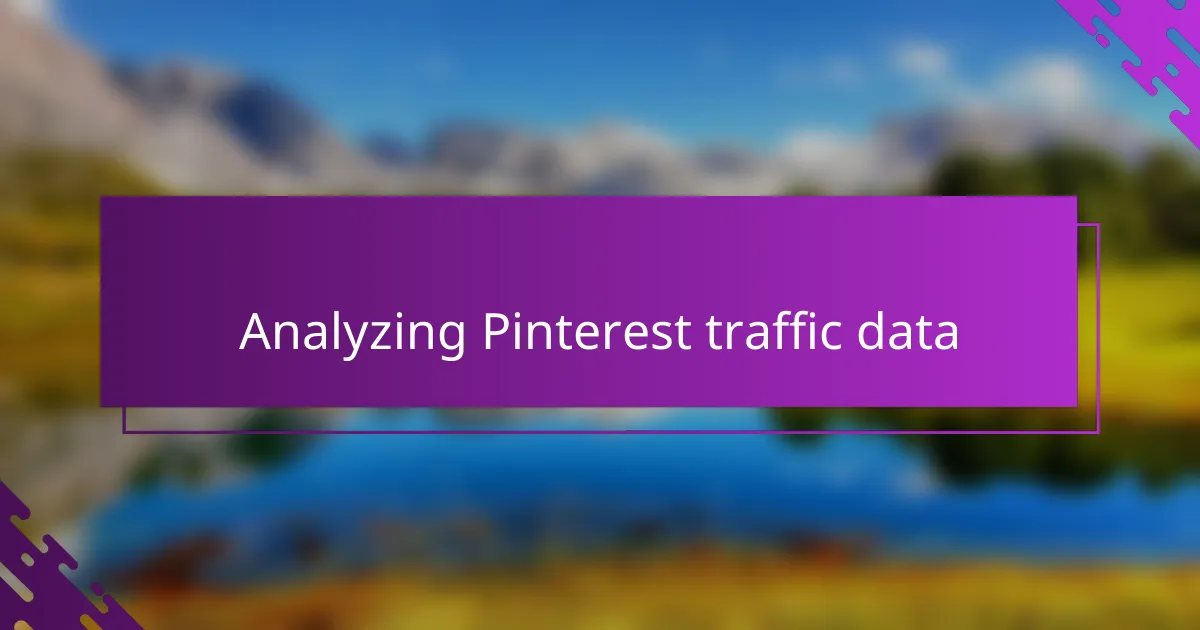
Analyzing Pinterest traffic data
Diving into Pinterest traffic data felt a bit like detective work for me. Have you ever stared at a dashboard full of numbers wondering which ones actually matter? I quickly learned that focusing on metrics like click-through rates and audience demographics gave me real clues about which pins were pulling their weight—and which ones needed a rethink.
What really surprised me was how seasonal trends showed up in the data. For instance, around holidays, certain topics would suddenly spike in clicks, helping me time my pinning to match when people were most interested. It made me realize that analyzing this data isn’t just about numbers; it’s about understanding my audience’s rhythms and habits over time.
One thing I can’t stress enough is the power of regularly monitoring Pinterest Analytics. It became my personal compass, guiding my content decisions. Whenever I spotted pins with unexpected success or decline, I asked myself: What worked here? What can I replicate or improve? That constant curiosity turned data from a confusing puzzle into a roadmap for sustained blog growth.
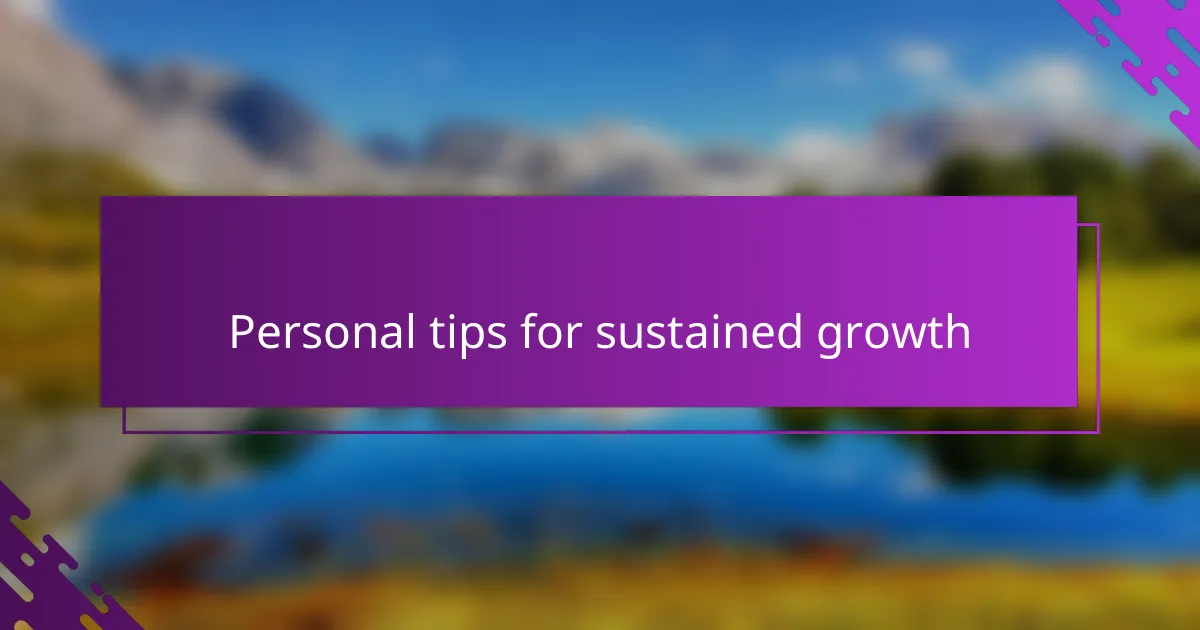
Personal tips for sustained growth
Sustaining growth on Pinterest felt like learning to nurture a garden rather than just planting seeds. Have you ever noticed how some pins suddenly lose traction? For me, it meant consistently refreshing my boards and updating pins with new keywords to keep them visible and relevant.
I’ve found that setting a realistic pinning schedule, even if it’s just a few pins a day, creates a rhythm that Pinterest’s algorithm seems to appreciate. What surprised me most was that quality mattered more than quantity; focusing on well-crafted pins consistently paid off far more than overwhelming the feed with random posts.
Sometimes, I remind myself to step back and celebrate small wins—like a pin that slowly climbs in engagement over weeks. Sustained growth isn’t about instant viral success; it’s about patience, persistence, and learning from what the analytics whisper over time. Have you tried trusting the process yet?
